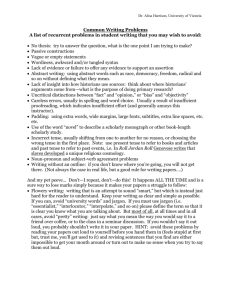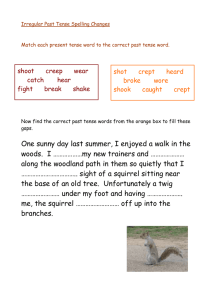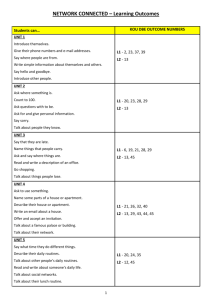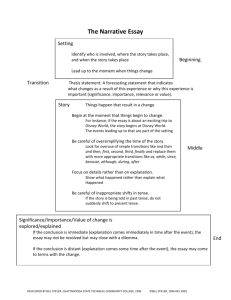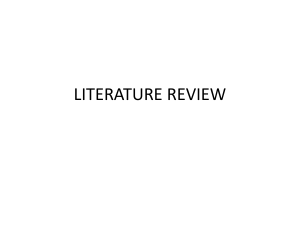Lecture 4 - INAYA Medical College
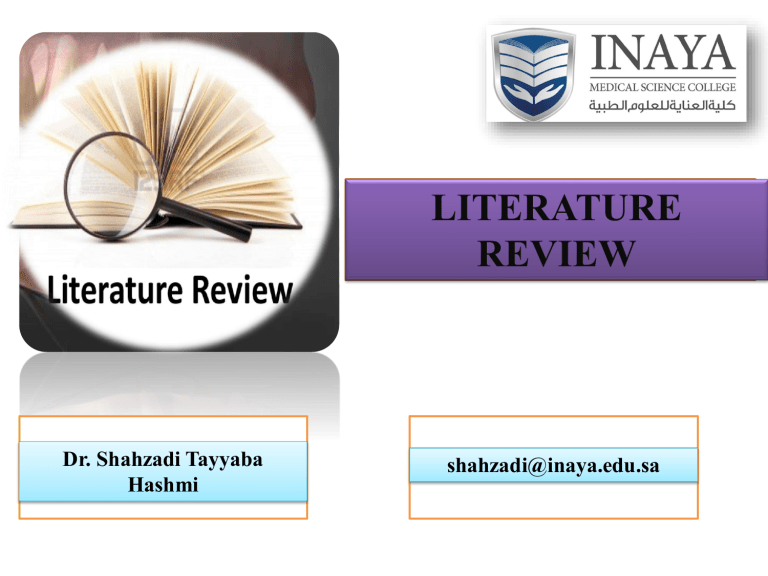
LITERATURE
REVIEW
Dr. Shahzadi Tayyaba
Hashmi shahzadi@inaya.edu.sa
LECTURE OUTLINE
Define a literature review
Identify resources to search for literature reviews
How to begin the process of collecting material for the development of a literature review
WHAT IS LITERATURE REVIEW?
Definition:
The process of reading, analyzing, evaluating, and summarizing scholarly materials about a specific topic.
Use:
•
The results of a literature review may be compiled in a report or they may serve as a part of a research article, thesis, or grant proposal.
PURPOSE OF LITERATURE
REVIEW
•
To show that you are a scholar
•
To demonstrate how your research will contribute to the existing knowledge
•
To show your skills in
–
Information seeking : that you know and can find the pertinent materials in your field
–
Critical appraisal : that you can evaluate the relevance/significance of your studies in your field
SOURCES ESSENTIAL FOR
LITERATURE REVIEW:
•
Two types of Sources:
•
Primary:
Primary sources are “materials that you are directly writing about, on the basis of the raw materials of your own research.”
•
Secondary:
Secondary sources are “books and articles in which other researchers work results of their research based on (their) primary data or sources.”
RESOURCES TO FIND
LITERATURE REVIEWS
Scholarly
Literature
Masters
Theses
Annual
Reviews of…(Journals)
Doctoral dissertations
Congressional
Hearings
Congressional
Research
Service reports
Congressional
Committee
Prints
STEPS TO WRITE A LITERATURE
REVIEW
Select a topic
Search and choose the literature
Analyze and interpret the literature
Write the review
1. SELECT A TOPIC
1. Choose a research interest:
Mass communication- Media
2. Search a research interest from everyday interest :
Film industry
3. Use the research interest to choose the research topic
2. SEARCH AND CHOOSE THE
LITERATURE
•
Find material relevant to the research subject e.g effects of films that affects the adolescents behaviour etc
•
Where can the appropriate literature be found:
•
Mostly from primary sources of literature such as: i.
Academic journals ii.
Conference proceedings iii. Theses iv. Dissertations
•
In scanning literature, manage your data properly by documenting the author, book title etc
3. ANALYZE AND INTERPRET
THE LITERATURE
•
Developing our argument and critiquing the literature to ensure that it supports our thesis
4. WRITE THE REVIEW
•
Composing, molding and refining the literature
•
The written literature review becomes a work that accurately conveys the research that can be understood by intended audience
Beginning the literature review:
•
Introduce your literature review by defining or explaining your research problem
•
Write the past tense except when discussing the significance, use present tense
IMPORTANT TIPS
•
Write the past tense except when discussing the significance, use present tense
•
An organizational scheme should be used to arrange the literature
•
Organizational schemes: o Topical order o Chronological order o Problem-cause-solution-order o General-to-specific order o Known-to-unknown order o Comparison-and-contrast-order o Specific-to-general-order

